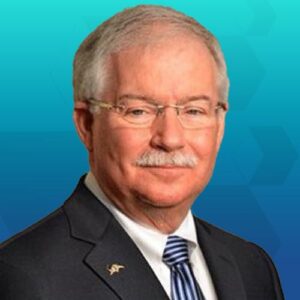As 2023 plays out and the 2024 competitive landscape shapes up, I have a thesis I tested out in this QuickTake conversation with Mike Marks this past week. Companies that take a more integrated or global approach to their transformational work are experiencing force-multiplier effects in building competitive advantage. Here’s how that’s worked out up to now, and how I think 2024 will offer opportunities for distribution leaders who are able to prioritize and execute working on the company, not just in the company.
Part one of thesis: Overall, larger distributors have gained share over the past three years as bigger burning platforms compelled them to get leaner and change. Many were already out front pre-pandemic on digital transformation work that translated into an overnight competitive advantage in the shift to virtual. Finally, they had more available resources to pivot faster and execute transformational work — particularly in digital — than smaller independents, where go-to-market models have been defined more by all-hands-on-deck team selling and customer relationships.

Clearly, there are other factors at work the past few years — leverage with suppliers for scarce inventory at the top of the list. But if you look at how cycles of consolidation and transformation have changed wholesale distribution, there are some lessons that apply today. This industry has seen waves of transformation across the almost 40 years I have studied it — most impactful being successive waves of digital maturity from internet to dot.com to Amazon, pandemic and now AI.
But we are now at a point past mid-2023 where other dimensions of business model transformation are gaining momentum; these include sales process, analytics and most recently, culture. As Marks and I discuss in the podcast, every company is at a different point in the work they are doing in each of these areas. Historically, these efforts have been single-focus efforts to achieve specific goals; no judgment intended.
Note: In our podcast, Marks and I talk about the framework of MDM’s SHIFT conference — held Sept. 18-20 in Denver — in the context of our broader discussion around these business model dimensions. View the agenda here for how we plan to integrate these and give you assessment tools across each dimension. The core theme of SHIFT is “Hybrid sales, powered by digital, built on data analytics.” We’re assembling the latest research and distributor stories about the transformational levers across sales process, digital, analytics and people that are defining the next-generation models of distribution — across every company size and segment of this industry.
Bigger Picture Than AI Alone
Part two of thesis: Competitive advantage and share will be won by those who take a more global and integrated approach to their transformation work and can execute on it. The share gain pendulum will swing back in 2024 with tailwinds from economic and market factors leveling the playing field for super-regional, regional and innovative smaller distributors punching above their weight.
Some may argue that the next big transformer in distribution is AI. There is no question that we are in the early stages of AI’s transformational impacts in ways we can’t completely link to yet (our upcoming AI in Distribution research report and roadmap for practical application of AI will keynote our digital transformation focus on day 2 of SHIFT).
My view is that AI will be a playing-field leveler in distribution’s highly fragmented markets. As with eCommerce, the largest distributors will have the most resources to execute first, but the nature of AI will compress the lag time it transitions from a gap creator as a competitive differentiator to a more universal tech stack and strategic business operational component.
The companies creating step change today are the ones with a culture of innovation, self-disruption and the talent to execute transformational work in an integrated fashion across the entire organization, not just in siloed areas. As Marks and I touch on in the podcast, it’s not just who’s got the best eCommerce platforms or top-drawer pricing optimization in place.
I may be optimistic on the timeframe of 2024 for how this next transformation cycle plays out with AI as a key accelerant. But I’m pretty confident in my thesis about transformation capability across the entire organization and not just specific operational silos. That’s why talent and a culture of innovation will be increasingly important differentiators (and why a critical part of the SHIFT agenda).
Final Thought
My postscript to this column is that Marks and I were concerned about making this too much of a sales pitch for our SHIFT conference. If you can’t attend to take advantage of our focus on assessment, strategy and execution to advance your market position in 2024, I hope our conversation can help you think through your strategy and areas of strengths of weaknesses in the organization around these transformation dimensions that are shaping best practice in wholesale distribution.
Check out our QuickTake conversation via the audio player above, and find all of our past MDM Podcast episodes here.
Related Posts
-
Tom Gale and IRCG’s Mike Marks debrief from attending ISA23, with a deeper discussion on…
-
Warren Noble, Vice President of Supplier Development, will retire March 31. James Rodgers has been…
-
The grand opening of its new 300,000-square-foot Tacoma warehouse and distribution center was held Feb.…






